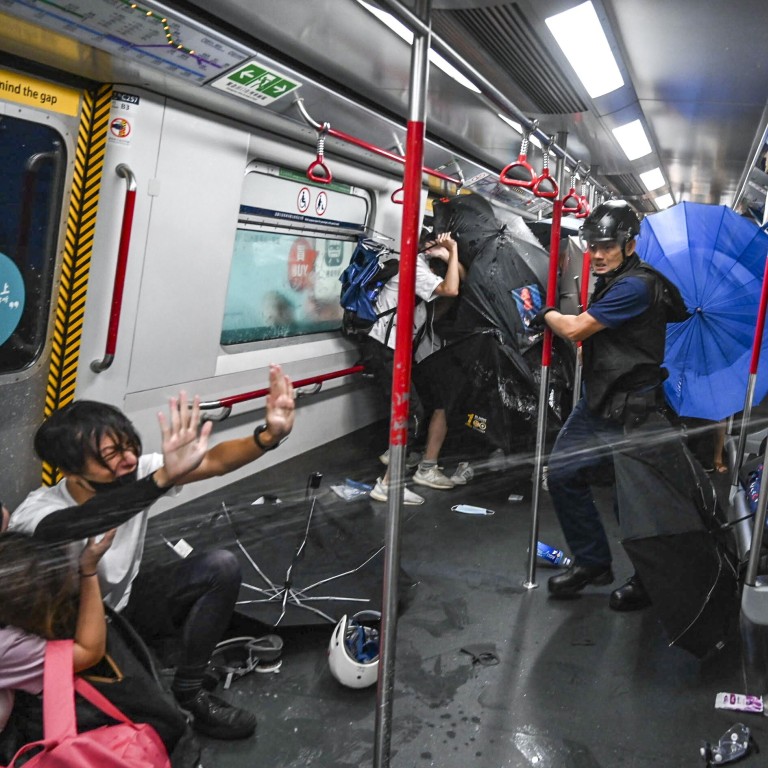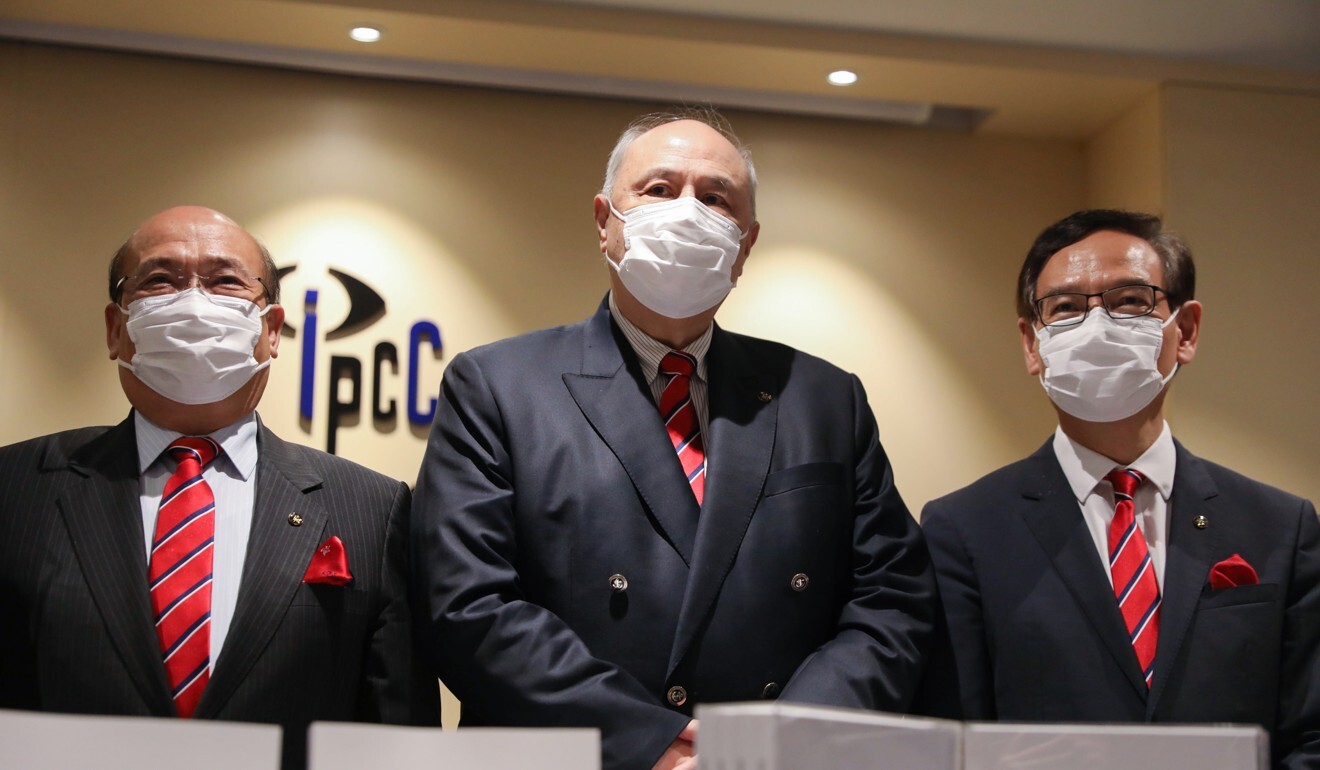
Hong Kong protests: no systemic problem with policing, but room to improve, watchdog concludes
- In long-awaited report, Independent Police Complaints Council says officers only used force in reaction to last year’s violent disturbances
- Recommendations include review of operational command structure, more training for officers, and clear guidelines on the use of weapons
In its 999-page report released on Friday, the Independent Police Complaints Council (IPCC) made 52 recommendations, including a review of the force’s operational command structure, more training for officers, clear guidelines on the use of weapons, and a task force to advise on the frequent use of tear gas.
While the IPCC maintained that investigating individual officers’ conduct was beyond the scope of its statutory powers, the report was widely criticised by opposition politicians, human-rights watchers and others who renewed calls for an independent commission of inquiry into allegations of police brutality.
“I am not naive enough to think that the publication of the report or my response to the report, even accepting all the recommendations for implementation, will put an end to this social unrest. But at least we will make every attempt to follow through the recommendations,” Chief Executive Carrie Lam Cheng Yuet-ngor said.
Against a stage backdrop bearing the words “The Truth About Hong Kong”, and plastered with images of last summer’s protest violence, Lam once again ruled out setting up a commission of inquiry, saying the nature of the movement had changed into a campaign to bend the government to its will by using violence.
Lam promised a new task force headed by the security minister would follow up on every recommendation, and that would include drafting, together with industry bodies, guidelines for journalists reporting at protest scenes and improving identification of police officers with clear badge numbers.
Frontline reporters have frequently complained of being deliberately targeted and subjected to violence by officers, who in turn have complained of unprofessional and disruptive behaviour by people in press vests.

Lam also revealed that she had shelved plans for an independent review into the underlying causes of the anti-government protests, saying people invited to join the panel had all dropped out over fears they would be victimised by the protest movement, and she needed to focus on battling the coronavirus pandemic for now.
IPCC chairman Anthony Neoh said while police guidelines on the use of force were not perfect, the problems were limited to individual officers rather than policing as a whole.
City leader Carrie Lam shelves independent review into what caused unrest
“I don’t think there’s any systemic [problem] as such,” Neoh said. “I don’t believe police as an institution have fallen below … sufficient systems of management and guidelines.”
But he added: “The rules on use of force should be more refined, and the supervision and training of officers when enforcing the law could be improved.”
In its report, the watchdog described the protests of the past 10 months, triggered by the government’s now-withdrawn extradition bill, as having morphed from peaceful processions at first to extreme forms of violent demonstrations in the streets, causing destruction of public and private property.
With the recent seizures of explosives and ammunition, the report concluded, “it seems that our community is being dragged into an era of terrorism”.
The report also touched on the public perception of police amid the protests, which it said was driven by “consistent and continuing message of hatred against the police”. It called for better communication strategy to “restore and rebuild public trust”.
A total of 1,755 complaints have been filed to the Complaints Against Police Office, the first contact point for complainants under a two-tier watchdog system. The IPCC is following up on 584 of them, which include 96 allegations of assault against arrested people, reporters and others.
More than 120 pages of the report were dedicated to the Yuen Long attack of July 21 last year, in which a white-clad mob armed with sticks and rods went after protesters and passers-by at an MTR station, leaving 47 people in hospital. The incident led to allegations – stemming from officers’ late arrival at the scene – that police had colluded with the attackers that night.
The IPCC said it had no legal power to investigate those allegations, but urged the force to improve its collection and sharing of timely intelligence on potential clashes.
It noted that police did have enough information back then to suggest a violent confrontation was building up, and could have intervened by enlisting the help of rural leaders and politicians, or by setting up a “small but visible” presence in the area. “The police’s failure to take timely action in certain instances did fuel allegations of collusion against [it],” the report read.
Police chief tried to discredit me, says girl who accused officers of gang rape
But on the question of an officer appearing to pat the shoulder of one of the white-clad men after the attack – another piece of evidence used to push the collusion theory – it said he was merely trying to get the men away from a nearby rival group.
While he did not criticise police specifically for the Yuen Long incident, Neoh said commissioner Chris Tang Ping-keung would agree they “could have done better”.
The IPCC also found the Sun Uk Ling Holding Centre – where detainees had complained of abuse in custody – was not suitable to handle mass arrests given its lack of surveillance cameras, single telephone landline and remote location near the border.
On the thorny issue of police not displaying badges, the watchdog stressed that identification was key to accountability, and should be “baseline practice” at protests in the long run.
Woman gets two months’ jail for hitting officer who stepped on protest posters
“This report will not placate genuine public concerns about the nature of police conduct during key moments in the evolution of the protest movement in Hong Kong,” Stott said, suggesting that a “genuinely independent inquiry”, with subpoena power, should be a basic requirement for such an investigation.
Icarus Wong Ho-yin, of the Civil Rights Observer, questioned the credibility of the report, noting that the watchdog had relied heavily on second-hand information from media and other reports.
“As the IPCC lacks investigative powers and ability to protect interviewees, it did not collect statements from subjects of police violence and officers,” Wong said.
Police ‘systematically infringed’ arrestees’ human rights, local group argues
Amnesty International Hong Kong, meanwhile, labelled the report “misleading”, saying it made “no attempt to establish accountability for the gross police misconduct seen on the streets since last summer” and demonstrated “the Hong Kong government’s effective refusal to address the widespread and systemic human rights violations that have taken place during protests since last June”.
One of the victims of the Yuen Long attack said the report had blurred the chain of events and wrongly portrayed the incident as a fight between two groups. Leung was referring to parts of the report, which said about 70 people in white “confronted” a group of about 100 people in black outfits on July 21.
“There were also innocent people and passengers who were hit,” Leung said, adding he was just a passer-by who was blocked from exiting the station.
Pro-establishment lawmaker Priscilla Leung Mei-fun welcomed the findings but admitted it would be unrealistic to expect the report to heal the social divide.
Additional reporting by Joyce Ng and Chris Lau
Help us understand what you are interested in so that we can improve SCMP and provide a better experience for you. We would like to invite you to take this five-minute survey on how you engage with SCMP and the news.


